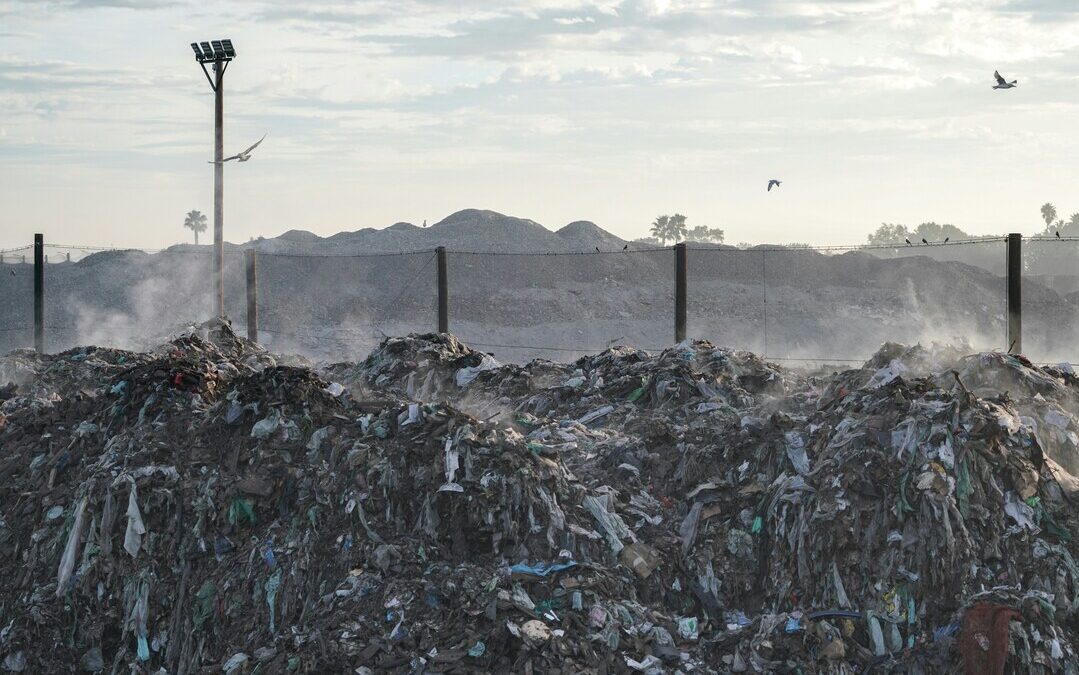Methane Emissions Still Rising as 2030 Climate Goals Slip Out of Reach: UNEP
Methane emissions are projected to rise as UNEP’s latest report warns urgent action is needed to meet global targets.
Global methane emissions remain on track to climb 5 percent by 2030 despite stronger national pledges, according to the United Nations Environment Programme’s Global Methane Status Report 2025.
The findings signal that current efforts are not enough to meet the Global Methane Pledge target of a 30 percent cut from 2020 levels by the end of the decade.
Methane emitted in 2020 reached about 352 million tonnes, and this level continues to rise under existing rules. Agriculture produced the largest share. Energy was close behind. Waste accounted for the rest.
“This evidence highlights both the challenge and the opportunity. We know where reductions can be achieved and we know they can be delivered at low cost,” said lead author Stefania Abakerli of the World Bank, in the report.
Slower Growth but Not Enough to Shift the Outlook
The report shows that the projected rise in emissions has slowed since 2021. UNEP says this shift is linked to better waste rules in Europe and North America and a weaker expansion in natural gas markets. These trends lowered expected 2030 emissions by 14 million tonnes. That amount equals more than a tenth of today’s energy sector methane output.
However, global methane output is still expected to increase under current legislation. The rise is modest but significant.
Agriculture remains the largest source, accounting for 42 percent of emissions. Energy follows at 38 percent. Waste contributes 20 percent. The G20-plus group accounts for about 65 percent of total emissions. Many fast-growing economies in the non-G20+ group are expected to see the steepest increases.
Even with the slowdown, UNEP says sharp reductions are not yet underway. Full implementation of today’s national climate plans and methane action plans would cut emissions by 42 million tonnes by 2030.
That level equals an 8 percent drop below 2020. This would be the largest recorded decline in methane output. Still, it falls short of the pace needed for the Global Methane Pledge.
Energy Sector Holds the Largest Fast-Action Potential
The energy sector accounts for 72 percent of all technical reduction potential available by 2030. Most options exist today, and many are low-cost. Several generate net savings because captured methane can be used or sold.
Oil and gas fields provide the biggest gains. Leaks are widespread and often easy to fix. Venting can be reduced. Old wells can be sealed. Pipelines can be upgraded. UNEP says these steps could reduce energy sector emissions by 94 million tonnes a year by 2030 if adopted at full scale.
Progress in rules has been reported. Oil and gas regulations have expanded in major regions. The European Union introduced the first global methane import standard. Countries such as Brazil, Canada and Kazakhstan strengthened domestic rules.
Voluntary industry efforts have also grown through the Oil and Gas Methane Partnership and the Oil and Gas Decarbonization Charter. These initiatives now cover up to 45 percent of global oil and gas output.
But gaps remain. Coal methane rules lag far behind oil and gas. Many national oil companies lack access to finance. Enforcement is weak in several countries. Monitoring capacity is uneven. Data transparency is inconsistent. UNEP warns that voluntary programs alone cannot close the gap.
Waste Sector Emissions Continue to Rise With Population Growth
Waste emissions are expected to rise 13 percent by 2030 and 56 percent by 2050 compared with 2020 levels. Population and economic growth drive the increase.
Expanding waste and wastewater collection brings health benefits but increases methane unless mitigated. Even with current national pledges, the sector’s emissions in 2030 are expected to exceed 2020 levels.
Yet the sector holds major potential, especially after 2030. UNEP says full technical measures could reduce methane by 13 million tonnes by 2030 and deliver far larger cuts by 2040 because legacy waste continues to emit for decades.
Many options are cost-effective. Some generate net savings. These include landfill gas capture, improved landfill design, composting, anaerobic digestion and separation of organic waste. Basic measures such as enforcing waste-handling rules and reducing food waste can deliver rapid benefits.
Barriers are widespread, especially in low- and middle-income countries. Regulatory systems are weak. Technical capacity is limited. Financing is scarce. Markets for recycled or recovered products are underdeveloped. Public awareness is low. Governance is fragmented. UNEP says early investment is essential because waste management systems take years to build and emissions decline slowly.
Agricultural Methane Remains the Largest Source and a Growing Challenge
Agriculture is projected to see an 8 percent increase in methane emissions by 2030 as demand for food grows. Livestock expansion in Africa and Latin America is a key factor. Even with fully implemented national plans, emissions still rise 4 percent above 2020 levels. The sector is responsible for 42 percent of total methane output.
Yet technical measures could reduce emissions by 24 million tonnes by 2030 and by 7 percent by 2050. Low-cost options include anaerobic digesters for manure, improved feed, better breeding, new rice cultivation methods and bans on agricultural biomass burning.
UNEP says these measures would cost about US$2.5 billion a year. That amount is far below the value of global farm subsidies. Repurposing a small share of those subsidies could help fund methane cuts.
Policy growth in agriculture has been uneven. Most rules focus on manure. Enteric fermentation, which is a larger source, remains underregulated. Rice methane policies are limited. Burning of crop residues continues in many high-emitting regions. Evidence on costs and effectiveness is scarce.
UNEP urges countries to move toward long-term strategies that combine productivity, resilience and emissions reductions.
Data, Finance and Long-Term Pathways Determine What Happens Next
The report says accurate empirical data is essential to track progress. Several inventories still rely on generic emission factors. Satellite and ground-based systems are growing but coverage remains uneven. Underreporting remains common.
UNEP says measurement-based monitoring is critical. It enables enforcement. It guides investment. It improves inventories.
Financing remains a central barrier. Methane mitigation finance reached $13.7 billion a year in 2021 and 2022. But UNEP estimates that achieving the 2030 target requires $127 billion a year. That level equals only 6 percent of global climate finance in 2023.
Development finance institutions provide about $3 billion a year for methane mitigation. UNEP says this level is small given their total annual investment of $2.5 trillion.
“This is one of the fastest and most cost-effective opportunities for climate action. The benefits far outweigh the costs,” Abakerli said.
UNEP adds that technical measures alone will not be enough after 2030. Deep decarbonization and demand-side changes must accompany methane cuts. These include shifts in diets, reductions in food waste and cleaner energy systems. Combined, these measures could reduce methane emissions 53 percent by 2050, which is consistent with 1.5°C pathways.
Still, the window for action remains open. The next five years are decisive. Many solutions already exist. Adoption is the barrier, not technology.
“Rapid action on methane can slow warming now and reduce major health risks,” Abakerli said. “The tools exist. What matters is how quickly they are deployed.”
Also Read:
Brazil, China and UK Lead Global Push to Curb Methane and Slow Climate Change
Nirmal Menon
Related posts

Subscribe
Error: Contact form not found.


